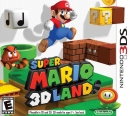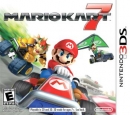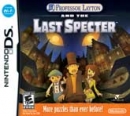Hardware
Part 1: Cameras and SD Cards

Iwata:
Let's start by talking about how development of the Nintendo DSi started. Mr. Kuwabara, you were the first to begin working on this project, weren't you?
Kuwabara:
That's right. I am Masato Kuwabara of the Development Engineering Department. At the end of 2006, my supervisor assigned me to the "New DS" project. First, we began gathering proposals in order to put together a "this is what we want to build" presentation for a meeting at the end of December.
Iwata:
That was quite a tight schedule, wasn't it?
Kuwabara:
Yes, it was. However, we moved at a rapid pace, and were able to nail down the rough specifications for the internal chip by the following February. From planning until setting the specifications, it felt like we were determining everything all at once, resulting in a fairly "dense" period of time.
Iwata:
At that time, what areas troubled you, and what areas were you adamant about?
Kuwabara:
I found it difficult that we had to develop our designs while keeping in mind how we were going to sell this product. What I mean is, since this isn't a completely new piece of hardware, we were unable to plan as if a number of big software titles were to be released simultaneously with the hardware.
Iwata:
Because this isn't a new platform. It is the third hardware revision of the Nintendo DS platform.
Kuwabara:
That's right. So, putting it simply, the hardware would have to sell on its own. In addition, the new model would have to blend in with the existing market for the DS.

Iwata:
That's right.
Kuwabara:
With all of that in mind, personally I felt a bit frustrated. I felt I was in a dilemma where I wasn't free to press forward full blast, and yet if I didn't move the concept forward it wouldn't have a feeling of "newness".
Iwata:
In other words, if you could ignore the existing DS market and technology, you could be much freer with your ideas. However, since you were required to think within the constraints of the DS platform, you're major concern was how to develop something new from within that framework.
Kuwabara:
That's right.
Iwata:
And, although we speak of constraints, the Nintendo DSi actually has many new functions not found in the DS Lite. Do you remember which functionality you came up with first?
Kuwabara:
Umm, the cameras came first. I suppose this may seem simply like a natural progression, but they add variety to games and the concept is easy to understand.
Iwata:
From the beginning, the DS had a touch screen for touch and a microphone for listening, and I remember near the start there was the idea of "adding an ‘eye' next". About these two cameras, one is on the outside of the housing, and the other is found on the inside of the housing when you open it. Tell me about the reasoning and background for adding two cameras.

Kuwabara:
Put simply, the camera on the outside is for taking photos of objects and people facing us, like how we use digital cameras. The camera on the inside can be used to take photos of yourself while operating the software. At first, some people thought it a waste to add two cameras, and that we should use only one camera with a swivel mechanism. However, adopting a new swivel mechanism would result in a cost increase and increase the size of the entire unit. So, as a result of considering all of these various factors, we decided that it would be best to add two cameras.
Iwata:
Also, there was the issue of reliability. There was discussion about how it would be pointless to add a swiveling camera if the swivel mechanism broke easily. Simply adopting the swivel mechanisms commonly used for cameras in mobile telephones would not satisfy Nintendo's high standards for quality.
Kuwabara:
That's right.
Iwata:
How did you decide on the resolution for these cameras?
Kuwabara:
I think it is generally believed that it is better for a camera to have a higher resolution. However, since our purpose was to "add an eye" to a gaming device, it is not accurate to simply say that a higher resolution is better. Cameras with higher resolution result in a larger unit, and an increase in the volume of data handled results in an increase in processing load. For a digital camera, with which you simply snap photos, it is ok to add special circuitry for the increased resolution, but envisioning that the cameras for the DSi will see a variety of uses, we stuck with 300,000-pixel cameras.
Iwata:
For several years, digital cameras and cameras in mobile phones have been competing based on number of pixels, resulting in "pixel inflation". So these days, there are probably people who would say a 300,000-pixel camera is outdated. However, these cameras can snap images with a resolution of 640 x 480, which is 2.5x the size of the DS screens both vertically and horizontally.

Iwata:
Photos taken with the Nintendo DSi can be enlarged and viewed, so when actually using these cameras there is almost no feeling of a lack of resolution. Also, if there are a large number of pixels, a greater amount of space is required to save a single photo. It's so bad that when using recent digital cameras with a large number of pixels, I reduce the resolution when saving a photo, because otherwise the data for a single photo takes up too much space. We also considered a suitable size for quickly and easily viewing photos on the DS screens, and, well, we settled on "mature technology", a hallmark of Nintendo. What other hardware modifications were made, other than the cameras?
Kuwabara:
We added support for SD memory cards. Honestly, during the planning stage, there was a time when I wasn't convinced of how much this addition would expand play for games, but in the end I felt confident we made the right choice.
Iwata:
What I remember most about the discussion on SD cards is that Mr. Miyamoto was strongly insistent in adding support for them.
Kuwabara:
Yes, that's right.
Iwata:
At the start of planning, I don't think the majority of software developers were in favor of adding support for SD cards. Adding support for SD cards would result in an increase in the size of the unit, and at that stage it was difficult to obtain a clear feeling of what could be achieved with SD card support or what we might be losing without it. But, Mr. Miyamoto said, "I want to add it." When I double-checked with him and asked, "Do you insist on this?" he replied, "I'll show you what I can do with it." (laughs)

Kuwabara:
Yes. (laughs)
Iwata:
And, well, we'll talk more about this in a later segment, the built-in sound functionality was actually added at very appropriate timing. (laughs) As a result, it was developed into an extremely appealing function. This was a good example of Mr. Miyamoto making good on his promise, "walking his talk".
Kuwabara:
That's right. Personally, I don't dislike the slap-bang feeling we experience at these times, so we exchanged a variety of opinions and made everything we could of them. I really like the built-in sound functionality that we came up with in the end.
Iwata:
By the way, those opinions arose when you and your team showed the planning-stage hardware to our in-house software development producers and asked for their feedback, right? We actually created several such opportunities for this kind of feedback. Did you ever feel pressure based on the opinions you heard from the software development side?
Kuwabara:
No, I didn't feel pressure. On the contrary, we received a lot of positive feedback and suggestions, so I actually felt like we were receiving support and encouragement.
Iwata:
So, rather than feeling beaten down, you were actually energized by the comments you received.
Kuwabara:
I didn't feel beaten down in the least. We received enormous help, and it made me feel like I wanted to talk more with a greater variety of people.
Iwata:
The truth is, when developing the Nintendo DS and even the Game Boy Advance before that, we didn't create these kinds of opportunities. First the hardware side decided their plans, then presented them to the software side saying "this is what we have decided", and then software development would begin for that hardware. I think this is the first time in Nintendo history when feedback was requested from the software side at such an early stage of hardware development, and then those opinions being applied to the hardware specifications.
Kuwabara:
Is that right? I didn't know that...
But, I think that may have been the best approach. (laughs)
(end of Part 1)
Part 2: Work on Two Models

Iwata:
I think there were many twists and turns from the time planning started until the Nintendo DSi was completed. Looking back, what gave you trouble?
Kuwabara:
Well …
The fact that major changes were made to the size of the unit at one point. The design had been completed, and we had reached the point where we were thinking of preparing the molds.
Iwata:
Explain what happened at that time.
Kuwabara:
Ok. It was October 2007. Before preparing the molds, we gathered together the producers from the Information Development Department for an in-house unveiling of our nearly completed design. The reaction we received wasn’t very good. And, in truth, that is what we expected. In other words, we unveiled this design to others, all the while wondering to ourselves if it was really ok to go forward with these specifications, specifications that had already been decided upon.
Iwata:
But, once you’ve come that far, you can’t simply say, “Let’s start over.”
Kuwabara:
That’s right. So, with these feelings of trepidation, we had the group take a look at our design, and then at the end asked them, “Is this a product you would want?” The result was 3 to 7. Three people wanted it, seven didn’t. But, you know, since we, the people in charge of the design, were right there asking them to their faces, I think it likely some were showing a bit of restraint. In that case, I wonder if the actual results weren’t something more like 1 to 9.
Iwata:
(laughs)
Kuwabara:
As we had expected, this wasn’t good. So, we performed an emergency reexamination of the design, decided to remove something, and then restarted toward the current, final design.

Iwata:
Umm, it would be easiest for everyone to understand if we said exactly what that “something” was.
With the original Nintendo DSi design, you could insert two DS games.
Kuwabara:
Yes. It had a double slot.
Iwata:
Requests for the addition of a second slot came not only from our customers, but also from various areas within Nintendo. Since we also thought this would be a good idea, we decided at first to go with the double slot design, fully aware that it would result in the disadvantage of a larger unit size. So, when you and your team made a model and we actually got it in our hands … it was big.
Kuwabara:
Compared to the current Nintendo DSi, it was clearly larger. It was about 3mm thicker than the current design.
Iwata:
If a second slot is added, an increase in size is unavoidable. So, the decision was made to give up on the double slot design, and make the size smaller.
Kuwabara:
That’s right. Without a doubt, it would have been difficult to make the change to that size. It had such a big impact.
Iwata:
I would like to point out that, at that stage, when you did the in-house unveiling, you had already finalized the internal design, right? You had finalized the layout of the internal parts, completed prototype evaluations, checked the design for strength and ease of assembly, and verified everything. And then, just when we are getting ready for production, right at the last minute, a change in size. You actually did the work for two units, didn’t you?

Kuwabara:
A completely new second unit, yes. (laughs) Well, Nintendo is well-known worldwide for its “upending the tea table” culture …
Iwata:
So, how was your experience “upending the tea table” for a hardware design? (laughs)
Kuwabara:
(laughs)
Iwata:
Of course, due to that decision, the release date was delayed and we had to give up on our double slot design. But, priority was given to creating a product that a variety of people would want.
Kuwabara:
Yes.
Iwata:
What happened next?
Kuwabara:
Things sped up after that. The internal structure had already been narrowed down, so we were working on a more difficult design. The schedule was very tight, and the team in charge of design cooperated and helped a lot. After we unveiled the large unit design, the team in charge of design was constantly providing ideas about how to make the unit thinner. Even though we had already completed one design.
Iwata:
Everyone must have been aware that we had to do something about the thickness of the unit.
Kuwabara:
Yes. That was exactly the case, so when we said, “We are starting over,” their response was, “That’s great.”
Iwata:
Even though it meant more work. (laughs)
Kuwabara:
Yes. But, we were happy.
Iwata:
So, in the end, two units were designed. Well, regarding the change in size, some would probably say, “Didn’t you realize from the start that it was going to be so big?” But, imaging the finished product simply from looking at parts and design illustrations, and making determinations based on non-functional design models leaves quite a different impression than when actually holding a nearly finished functional model in your hands. When we actually got the first completed machine in our hands, it looked big and felt heavy. Let’s ask Mr. Ebara about that.
Ebara:
I am Yui Ebara. I worked on the design of the housing for the Nintendo DSi.

Iwata:
Mr. Ebara, you also worked on the housing for the DS Lite, right?
Ebara:
Yes.
Iwata:
After designing the housing, how did you feel when it was decided to change the size and redo the design? I bet you felt like, “You didn’t realize this before we built it?”
Ebara:
Well, yeah, I thought, “Why are you telling me this now?”
All:
(laughter)
Iwata:
Can you tell us what it means to make the Nintendo DS thinner? There are many extremely thin electronic devices in the world, like mobile phones and electronic dictionaries. Compared with those devices, the DS doesn’t appear very thin, so even if we here get very excited talking about our new thin design, I think there are probably a lot of people who don’t quite see it the same way. Primarily, a major difference between the DS and a mobile phone is our approach to the strength of the product, isn’t it?
Ebara:
Yes, that’s right. First is the issue of strength, so that the product will not break when subject to a certain level of impact. Reliability against breakage. That is a major difference, and one that we place a lot of emphasis on when designing the product. Another aspect is that the number of units we produce for a single model is overwhelmingly larger than other electronic devices, and therefore we must consider the life span of the molds.

Iwata:
There really is no comparison in the number of units produced, and therefore we must think about the life span of the molds. So, there is the limitation of using only designs and materials that do not place stress on the molds, to the extent possible.
Ebara:
Also, there is price. Recent slimline mobile phones have much higher manufacturing costs than gaming hardware. But, for portable gaming hardware, costs must be controlled so that the product can be sold at around 20,000 yen or less. So, this puts a limitation on the materials we can use. Quite simply, it isn’t quite fair to make a comparison by saying, “There are thinner electronic devices.”
Iwata:
So, a unique feature of the creation of the DS is that we must find balance in all aspects, including the appearance of the design, the ease of use of the design, the internal structure, strength, mass productivity, and manufacturing cost. If we had a low production volume, we could take a variety of bold steps such as incorporating manual work procedures and using special materials. However, due to our large production volume, that isn’t an option.
Ebara:
Yes, that’s right.
Iwata:
We are always coming up with ways to make our products as thin as possible, within these limitations. What did you come up with this time?
Kuwabara:
Regarding the design, we drastically reduced wasted space on the inside. The location of the CPU has been changed, the battery mounting was elevated … I think the person in charge of designing the board had a lot of hard work. All of the parts are really packed tight in there, and the company was really picky about pricing …
Iwata:
Sorry to be so picky. (laughs)
Kuwabara:
Oh, umm, sorry. (laughs)
Iwata:
So, you reduced the number of slots and made the DS thinner. When you unveiled this new design in-house, did you receive a better evaluation?
Kuwabara:
Yes, it was completely different. Everyone immediately said, “Oh, this is much better.”
(end of Part 2)
Part 3: Simple Icons
Part 4: My DS







































































